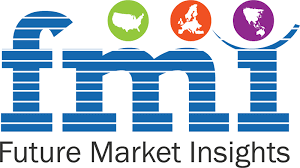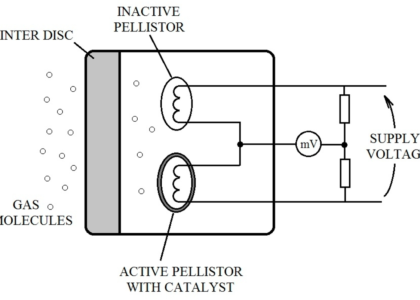The medical automation market is size of the worldwide medical automation market is anticipated to transcend an astounding USD 44.45 billion in 2022 and to rise at a projected CAGR of 10.6% from 2023 to 2033.
The use of automated equipment by pharmaceutical firms’ drug development divisions, the growing demand for miniaturisation, and technical advancements along with the rising demand for robot-assisted surgeries are a few of the key factors driving the medical automation market.
The usage of control systems and software to independently operate and monitor a mechanized system is often termed as automation technology. These mechanized systems are used in various industrial processes including chemicals & materials, food & beverage, healthcare, and others. Automated delivery of medical practices helps reduce human errors, proves to be cost-efficient in long term, and streamlines the process with improved outcomes.
Request a Sample PDF @
https://www.futuremarketinsights.com/reports/sample/rep-gb-397
The development of the medical automation market is predicted to be fueled by the increasing usage of point-of-care testing devices such as HIV test kits, pregnancy test kits, and digital blood pressure monitors.
Key Takeaways
- The surging demand for accuracy and reliability in medical procedures and increasing government investments are some of the dominant factors which are likely to propel the market for medical automation. Rising labor cost is yet another reason marking high sales in the medical automation market.
- There are several segmentations of the medical automation market on the basis of application, geography, and end-users. Further, the application segment is categorized into subdivisions such as the therapeutic automation market, medical automation market, and lab & pharmacy automation market.
- The medical automation market is further categorized on the basis of automated image analysis, automated imaging, and the point of care testing market. The major segments covered in the automated imaging market are automated radiography, automated microscopy, capsule endoscopy, and automated fluoroscopy.
- Lab & pharmacy automation markets can be identified on the basis of the lab automation market and pharmacy automation market. The lab automation market includes microplate readers, liquid handling, automated storage and retrieval systems, stand-alone robots, and software and informatics systems.
- Automated medication dispensing systems, automated packaging, and labeling systems, and automated medication compounding systems fall under the subdivision of the pharmacy automation market.
- End user basis in the medical automation market can be further classified as pharmacies, research laboratories & institutes, hospital, and diagnostic centers and home/ ambulatory, and others. However, strict government regulation for medical device manufacturers globally is likely to hinder the growth of this market.
Ask Us Your Questions about This Report @
https://www.futuremarketinsights.com/ask-question/rep-gb-397
Competitive Landscape
iAccuray, Inc., Beckman Coulter, Inc., Asahi Kasei Corp, Carefusion Corp, GE Healthcare, Lifescan, Inc., Medtronic, Inc., Intuitive Surgical Inc., Omnicell, Inc, Roche Holding AG, Philips Healthcare, Siemens Healthcare, St. Jude Medical, Inc., Stanley Black and Decker, Inc, Swisslog Holdings AG, Stryker Corporation, Simsurgery As, Parata Systems LLC are some of the key companies profiled in the full version of the report.
Key players in the medical automation market are collaborating with each other and surging investments by venture capitalists are some of the prominent reasons, which have augmented the demand for medical automation all over the world.
More Insights into the Medical Automation Market
North America is currently estimated for the largest share of the medical automation market followed by the European region. Owing to surging government investments and funding, there is a significant dominance witnessed by these regions.
The medical automation in therapy segment accounts for the major market share in the U.S. followed by diagnostics & monitoring and logistics & training.
Countries like India, China, Japan, and Taiwan are anticipated to showcase a phenomenal growth rate in the Asia-Pacific region in the near future. The prominent reason behind an expansion would be a rapid decline in the number of rural laborers, increasing government investments towards automation and economic developments.
In addition to that, the growing demand for automation in research laboratories is further propelling growth in the medical automation market in the Asia-Pacific region.
Get Customization Link @
https://www.futuremarketinsights.com/customization-available/rep-gb-397
Healthcare Automation Market – Segmentation
FMI’s study on the global healthcare automation market includes information divided into three segments: application, end-user, and region. Changing industry trends and other market dynamics associated with these segments of the global healthcare automation market are discussed in detail.
Application
- Therapeutic Automation
- Lab & Pharmacy Automation
- Logistics & Training Automation
- Diagnostics & Monitoring Automation
End-user
- Pharmacies
- Research Institutes & Labs
- Home Care
- Others
Region
- North America
- Europe
- Asia Pacific
- Latin America
- Middle East & Africa
About Us
Future Market Insights (ESOMAR certified market research organization and a member of Greater New York Chamber of Commerce) provides in-depth insights into governing factors elevating the demand in the market. It discloses opportunities that will favor the market growth in various segments on the basis of Source, Application, Sales Channel and End Use over the next 10-years.
Contact Us:
Future Market Insights,
Unit No: 1602-006,
Jumeirah Bay 2,
Plot No: JLT-PH2-X2A,
Jumeirah Lakes Towers,
Dubai,
United Arab Emirates
For Sales Enquiries: sales@futuremarketinsights.com
Website: https://www.futuremarketinsights.com
LinkedIn| Twitter| Blogs


